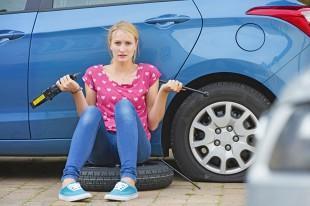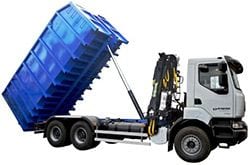
14 tire myths
 Myths about car tires appear from time to time and, unfortunately, there will always be people who believe them. Check if you are one of them!
Myths about car tires appear from time to time and, unfortunately, there will always be people who believe them. Check if you are one of them!
 Where do myths come from? Many are convinced that car and tire manufacturers are only waiting to expose naive drivers to unnecessary expenses. That is why some car owners use solutions several and even several decades ago, claiming that they will work well today. Others, in turn, suggest that it is better to listen to your son-in-law or read the answers on the forum from not always competent consultants. This is how myths are born... Here are 14 false opinions about tires.
Where do myths come from? Many are convinced that car and tire manufacturers are only waiting to expose naive drivers to unnecessary expenses. That is why some car owners use solutions several and even several decades ago, claiming that they will work well today. Others, in turn, suggest that it is better to listen to your son-in-law or read the answers on the forum from not always competent consultants. This is how myths are born... Here are 14 false opinions about tires.
1. You can use any size tires in your car as long as they fit your rims. Often such a "solution" can be found when buying a used car. The dealer will hide good tires for himself or another buyer, and put the one he has on hand on the car he sells. Meanwhile, the use of tires of other sizes than those recommended by the manufacturer is not allowed - this is simply dangerous. If someone does not have a car owner's manual, they can easily check which tires are recommended for a given car. It is enough to indicate its brand and model on the websites of large online tire stores.
2. You must have two sets of tires and you must change them every season or you could get fined. There is no compulsion to use winter tires in Poland. They are changed only to improve safety in the winter season. It is also not necessary to have two sets of tires. It is enough to buy all-season tires.
3. If the tread is high enough, summer tires can be used all year round. Not true. Safety is not only affected by tread height. Equally important is the rubber compound the tire is made of and the shape of the tread. The compound used in winter tires is not suitable for summer driving as it wears off very quickly. The shape of the tread, in turn, is ideal for the intended use of the tire; The tread pattern for summer tires is different than for winter tires, and one more for all-season tires.
4. It is worth buying used tires because they are cheaper than new ones. Are you sure? Prices for used tires are lower, but... with proper use, new tires will last 5 years without problems. What about used? Two maximum. Such tires very often come from used or broken cars. Maybe they were perforated or poorly stored, maybe they are old?
5. Instead of buying new tires, it's better to retread old ones. This solution was used many years ago when tires were a scarce commodity. Currently, retreaded tires cost only a few dozen PLN less than new tyres, which is too little to risk. And the risk is high - the protector can peel off from them. In addition, they are very noisy when driving, are stiffer than standard ones (which is unfavorable for the suspension elements) and wear out quickly.
6. You don’t need to carry a wheel pump with you; if necessary, pump it up at the station. This is also a mistake; correct pressure has a huge impact on driving safety and tire durability. They should be checked frequently and, if necessary, topped up to the appropriate level specified by the vehicle manufacturer. If the tire pressure is too low, it may fail before you even get to the gas station.
7. The cost of using Run Flat is no different from others. Run flat tires are the ideal solution - in the event of a puncture, air does not escape from them. It is possible to drive further (but not faster than 80 km/h) to reach the vulcanizer. First of all, repairs can only be carried out in specialized workshops, which are few in number. The second is the price. The cost of repairing a hole in a regular tire is usually PLN 30. Start apartment renovation? Even ten times more. The tires themselves are also much more expensive.
8. When replacing only two tires, install the front tires.. Not every driver can afford to change all tires at once. That is why many people first buy two and install them on the front axle, because the car is front-wheel drive. Unfortunately, this is a mistake, and a serious one. If you are replacing tires on only one axle, they should be fitted at the rear as rear tires affect vehicle stability, steering precision and braking performance, especially on wet surfaces.
9. Winter tires are narrower than summer tires. Winter tires must be the same width as summer tires. The narrower the tires, the less grip and the longer the stopping distance.
10. The age of the tire and its storage do not affect its properties.. It is not true. Tires are crushed even when not in use. You should not buy products older than five years, and the best ones are those that were produced a maximum of a year earlier. Tires should be stored vertically, on a shelf or on a special stand. Must be min. 10 cm from the floor. They must be turned over at least once a month to avoid deformation.
11. The use of eco-friendly tires in itself means that you can count on significant savings due to lower fuel consumption. In order for the reduced rolling resistance of eco-friendly tires (obtained by the silica rubber compound and the special tread shape) to have an economic effect, the vehicle must be in perfect working order. New spark plugs, oil changes, clean filters, properly adjusted geometry and toe, tuned suspension all contribute to reduced rolling resistance and lower fuel consumption.
12. Seasonal tires on the second set of discs can be installed immediately. When a driver has two sets of rims, he himself removes one set and puts on another. But a visit to the vulcanization company is necessary at least once a year. Check if the wheels are properly balanced.
13. All season tires must not be removed. They can be ridden for several years until they wear out.. All-season tires are a very convenient solution that allows you to significantly save on replacement tires. But we must remember that from time to time the wheels have to be changed in the order according to the recommendations of the car manufacturer. This has a big impact on uniform tread wear.
14. When parking for a long time in the garage or in the parking lot, there is no need to check the tire pressure. Not true. Even if the vehicle has not been used for several months, the tire pressure should be increased if necessary. Low pressure in one of them wears it out much faster.
What do experts think about tire myths?
– There are currently hundreds of tire models on sale, among which you can find a number of products designed for all customer groups. Economy products are available for those who don't want to pay a lot for new tires, while products from higher segments are waiting for the rest, says Philip Fischer from Oponeo.pl, the leader in tire sales in Poland. – Internet prices are favorable, and assembly is offered at a very low price. New tires provide comfort and a high level of safety.
